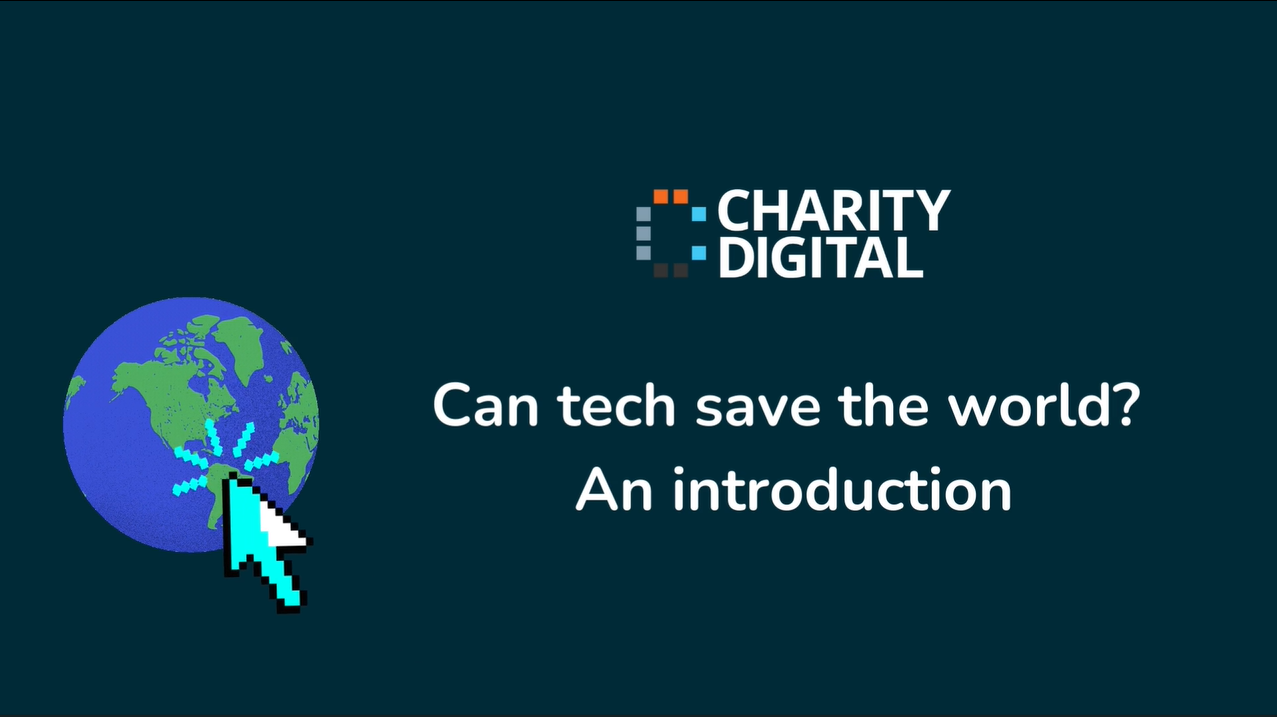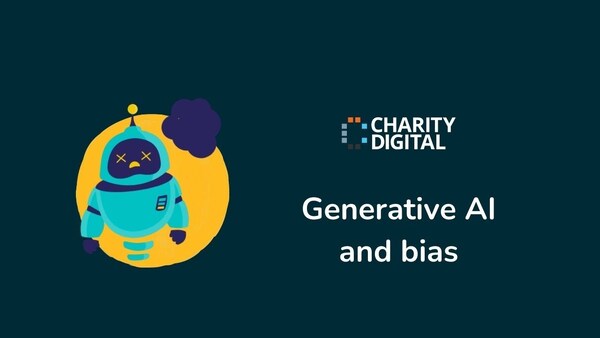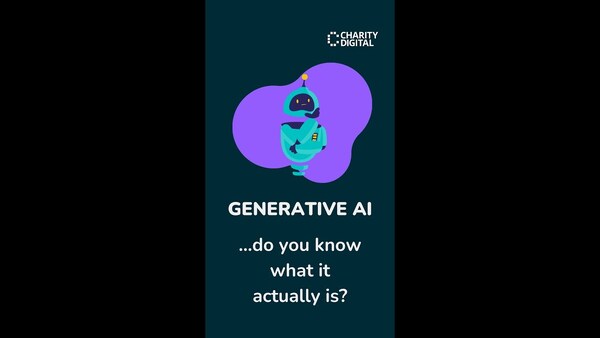Insights
INSIGHTS
All Topics
Generative artificial intelligence (AI) facts you need to know in 2025
We examine some of the latest facts and stats about artificial intelligence, with reference to the users of generative AI, the economics of generative AI, the perception of AI, and AI of the future
Generative artificial intelligence (AI) is the most talked about topic of 2024. Predictions are ill-advised in an unpredictable world, but we imagine that generative AI will prove the most talked about topic of 2025.
The nature of generative AI means that platforms will improve, expand, and diversify, offering new and greater solutions to pre-existing issues and further streamlining operations.
AI will define the future. Organisations can stay ahead of the curve by gaining the knowledge they need to excel. In this article, we provide that knowledge, exploring the important facts and stats around generative AI – with reference to marketing and AI, the economics of generative AI, general perceptions of AI, and so much more – and question what that might mean for your organisation.
Skip to: Facts about the use of generative AI
Skip to: Economic facts about generative AI
Skip to: Marketing facts about generative AI
Skip to: Facts about the perception of generative AI
Skip to: Facts about generative AI of the future
Facts about the use of generative artificial intelligence (AI)
Generative AI platforms have been around for years. Joseph Weizenbaum created the first generative AI in the 1960s as part of the Eliza chatbot. But it is only recently that generative AI has become a part of the wider discourse, seeped into almost every tech discussion. Generative AI is booming. Consider, for example, that ChatGPT surpassed one million users in less than a week after launching in late 2022, according to Reuters. Two months later, in January 2023, the app had 100 million users.
And that growth has continued. As of July 2023, more than 25% of people in the UK had used generative AI, according to Deloitte, and more than 60% of companies used generative AI, according to Jasper. Of the people using generative AI in the workplace, 46% use it more than once per week and just under a third of employees use it more than once per day – numbers that will inevitably rise.
Interestingly, according to Fishbowl, 68% of employees using ChatGPT at work did so without their bosses knowing. But bosses might not be dismayed: nearly all executives think AI will be important to their strategies, Accenture says, and 64% of executives feel an urgent need to adopt generative AI, according to Google. Employees are using the
tech – and leaders want employees to use the tech.
And it isn’t just workers using generative AI. Consider, for example, that 1 in 3 US college students use ChatGPT for homework assignments, according to Intelligent.com. More than half of UK college students have used generative AI in their education, according to Deloitte. Students use the tech, but no age group uses generative AI significantly
more than the others, according to Statista.
Certain industries do tend to use generative AI more than other industries. Consider, for example, stats offered by the World Economic Forum that show education, business services, manufacturing, and finance companies are most likely to use OpenAI solutions. AI is also used heavily in coding: 95% of software developers are using generative AI tools to write new code, according to Sourcegraph.
Certain locations are adopting generative AI at a faster pace. Chinese and Indian firms have the highest AI adoption rates at nearly 60%. AI adoption was half of that or less in the US (25%), UK (26%), Canada (28%), and Australia (24%), according to Deccan Herald. In a similar vein, China has the most people searching for ChatGPT, followed by Nepal and Singapore, according to Wired.
Economic facts about generative artificial intelligence (AI)
Now and in the future, generative AI will have a substantial impact on the world economy. The global generative AI market will reach $3.7 billion by early 2024, according to S&P Global. The global generative AI market size will reach $51.8 billion by 2028, according to Markets and Markets. The global generative AI market is estimated to reach $1.3 trillion by 2032, according to Bloomberg.
In short, generative AI will see huge growth over the next decade. The growth is understandable, considering McKinsey predicts that AI will add between $2.6-4.4 trillion to the global economy. To get a sense of the size of that number: the UK’s entire GDP in 2021 was $3.1 trillion. Generative AI, this year, alone could generate more money than the entire British economy.
It is perhaps unsurprising, therefore, that people are investing. OpenAI is the biggest generative AI company by value and users, according to SimilarWeb, but various companies are trying to compete with – or eclipse – ChatGPT, using ever-increasing investment. In fact, $1.7 billion in venture capital has been raised for non-ChatGPT AI solutions, according to Gartner. According to Pitchfork, that funding is still in early stages, with funding likely to jump to more than $10 billion in the near future.
Yet despite the prospects, despite the investment, generative AI is costly. Consider, for example, that training ChatGPT-3 cost $3.2 million in computer resources, according to Santander, or that the generative AI platform Bard lost Google $100bn in stock value after its showcase in 2023, according to the Wall Street Journal. Or consider that OpenAI may be spending more than $700,000 every single day to run servers that power generative AI platforms – and the cost of those servers, as more users arrive, will grow.
Marketing facts about generative artificial intelligence (AI)
Perhaps the greatest impact of generative AI has been in marketing. The marketing industry has the highest generative AI adoption rate, according to Statista, and the most common usage of ChatGPT is the generation of content for marketing. Indeed, over 50% of leaders have implemented generative AI for content marketing, according to SeigeMedia, and that number seems likely to grow.
Email is another area that has been drastically changed by generative AI. Consider, for example, that 44% of marketers use generative AI to produce email copy, according to Botco, and 66% of marketers are using generative AI for brainstorming. Using generative AI for email typically involves brainstorming, asking the platforms to give subject line options, and finding the right wording.
Successful email and content marketing depends on knowledge of prompt use, the absence of which can prove a problem for marketing teams. Indeed, 50% of marketers say team training is the biggest roadblock to adopting AI, according to Botco, so teams should immediately look at training options.
Facts about the perception of generative artificial intelligence (AI)
Despite the hype around AI, critics preach caution. There are risks associated with generative AI, many of which are acknowledged by the public. Perhaps the biggest ethical risk is the perpetuation of misinformation. Consider that, according to Insider Intelligence, more than 50% of adults fear AI-generated content is misleading or simply inaccurate. In addition, 70% of executives and developers are worried about generative AI tools giving users the wrong information, according to Google.
The risk of misinformation and inaccuracy has led to skepticism towards generative AI-written content. Research revealed that more than three quarters (78%) of adults saw AI-written news items as unfavourable. All age groups seemed uneasy, but the young were less uneasy: 19% of younger customers viewed AI-written news as a positive development, compared to only 7% of those aged 55 and over, according to Statista. There are indeed questions marks not only over accuracy, but quality, with many raising concerns about how generic, dull, and often boring generative AI content reads or sounds.
The ethics of AI pose huge questions for organisations. Using AI should entail a degree of mindfulness, an awareness of the consequences of use. That does not just mean for written content, but for image-based content, too. Only 38% of consumers think AI art is ethical, according to Big Village, showing a widespread skepticism. The lack of ethics around generative AI art revolves around the failure to acknowledge the artworks used to generate the art, as well as the absence of decipherable human input. These are all questions that will dominate discussions around generative AI, as the tech develops, as new iterations arrive, as governments aim to regulate the tech.
Facts about generative artificial intelligence (AI) of the future
It may be no exaggeration to suggest that generative AI will shape the future of the global economy. It will shift the way we work, the nature of work, and how often we work. Most senior IT leaders (57%) believe generative AI is a ‘game changer, according to Salesforce. Most tech commentators believe, in one form or another, that generative AI will change the landscape of the workforce.
According to Jasper, for example, 68% of tech professionals do not believe their jobs are at risk due to generative AI. But, according to McKinsey, generative AI will reduce workload by 60% to 70%. It is perhaps unwise to speculate, but AI will likely lead to an era of creative destruction, in which new innovations replace old innovations. But that does not necessitate large-scale job loss. It is entirely possible that employees will upskill, shift priorities, find new ways to
boost productivity in their roles.
Streamlining is a core part of AI’s appeal. Problem-solving in the future can be improved by 15% due to generative AI, according to NBER. Chunks of data in the future will be generated by AI, according to Gartner, and large organisations will increasingly have outbound messages synthesised, a likely uptick from 20% in 2022 to 30% in 2025.
Generative AI will change the way everyone works. It will streamline processes, make old processes redundant, and pave the way for new processes. But not all elements of work will (or can) be improved by generative AI. The conflict in the creative industries shows the potential issues.
Consider, for example, that Gartner predicts a major blockbuster film will be released, with 90% of the film generated by AI (from text to video) up from 0% in 2022. That prediction preceded the writers’ strike. It preceded studies that showed ‘human favouritism’ – the idea that audiences, believe it or not, actually want to consume art and content created by humans.
Ioan Marc Jones
More on this topic
Recommended Products
Recommended Products
Our Events
Charity Digital Academy
Our courses aim, in just three hours, to enhance soft skills and hard skills, boost your knowledge of finance and artificial intelligence, and supercharge your digital capabilities. Check out some of the incredible options by clicking here.





















